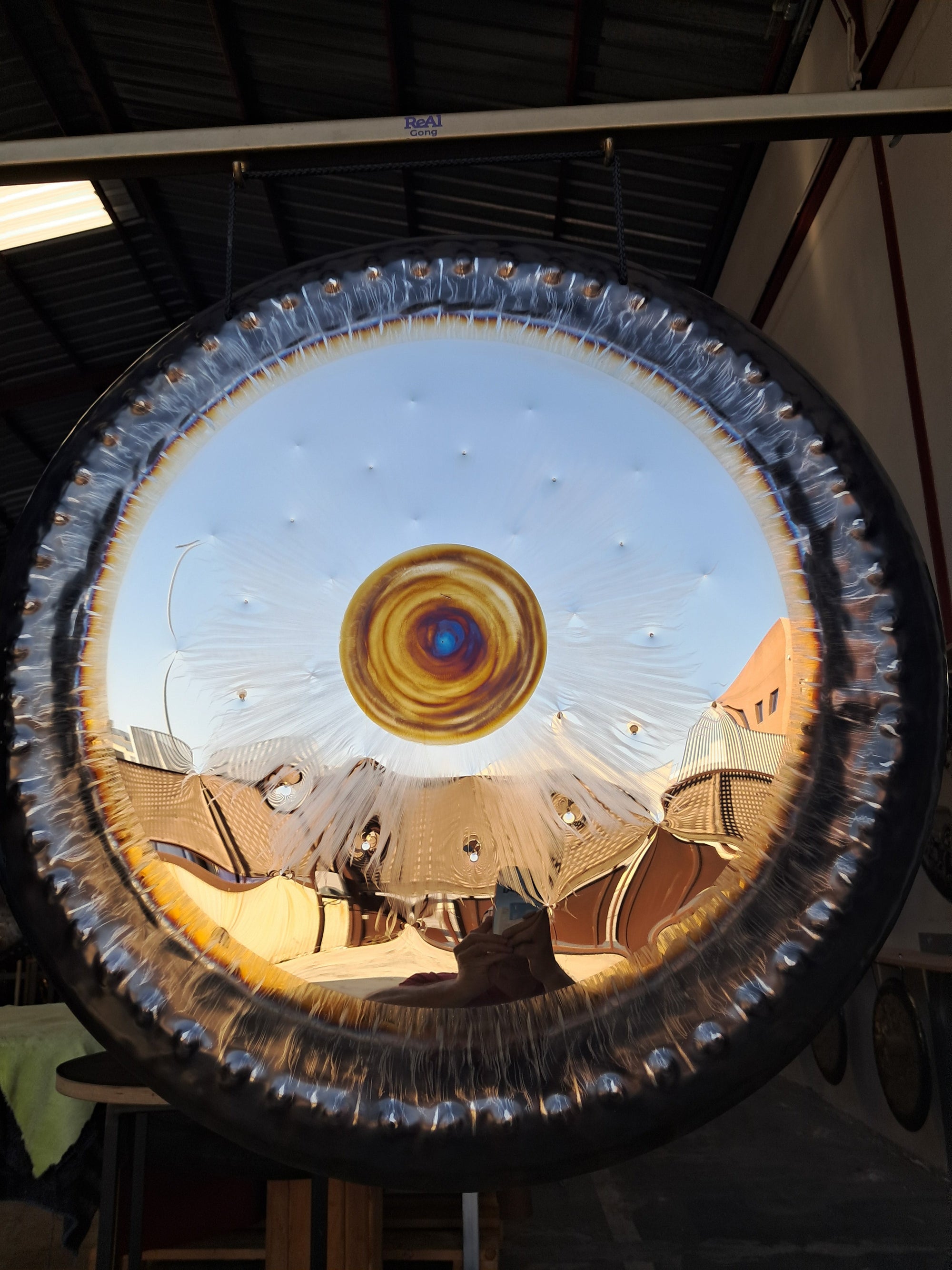Singing bowls produce their distinctive sounds and emotional effects because of how they vibrate, the structure of their overtones, and how our brains and bodies respond to complex harmonic resonance.
They are fundamentally bells, standing-wave resonators.
Here’s a breakdown grounded in scientific research and acoustic analysis, including insight from high-resolution spectrum analysis of hundreds of bowls.
What Makes a Singing Bowl Ring? (Physics of Vibration)
Singing bowls are rotationally symmetric resonators (like inverted bells).
When struck or rubbed around the rim, the metal flexes and vibrates, forming standing waves.
These include radial and tangential vibrational modes, these are visible as ripples and nodes across the bowl surface.
Each vibrational mode generates a tone, and the lowest mode is the fundamental frequency.
Unlike Western musical instruments, which are tuned to specific pitches, handmade bowls are not precision-tuned, rather their tones emerge from, bowl diameter and thickness, metal composition, and hammering pattern and surface irregularities.
Why Do They Sound So Rich? (Harmonics & Binaural Beating)
Singing bowls emit in harmonic partials—a set of frequencies that don’t follow the exact 2x, 3x, 4x multiple of the fundamental seen in string instruments.
Instead, they produce partials that are near-multiples, but not exact.
This gives bowls their unique shimmering sound which is a blend of low fundamental tones with floating overtones (often in the 3rd, 4th, and 5th octaves).
Most bowls emit multiple notes simultaneously, often with overlapping amplitude envelopes (i.e., some tones fade quickly, others sustain).
Our sound analysis of hundreds of bowls show that most high-quality bowls have a dominant fundamental between C2–G4, with strong secondary overtones in the 4th–6th octave.
Some bowls also display beating, two close frequencies that interfere to create a pulsing effect at 2–12 Hz.
Why Do They Make Us Feel Something? (Psychoacoustics & Brainwaves)
Brainwave entrainment -- Singing bowls frequently emit frequency pairs that fall into theta (4–8 Hz) or alpha (8–12 Hz) beat frequencies.
The low-frequency hums (e.g., 120 Hz and below) vibrate into the body.
These tones can stimulate the vagus nerve and parasympathetic system through tactile transmission, especially when the bowl is held or placed on the body.
Bowls with pure, slowly decaying overtones are experienced as calming.
Bowls with active, fast-shifting harmonic textures may stimulate focus or release. Each bowl is different, and each person's response to a particular bowl will be different.
What Makes a Bowl Sound "Good"? (Insights from Our Analysis)
Across hundreds of hand-selected bowls analyzed for The Ohm Store....
Bell bronze alloy (copper + tin) bowls produce denser overtone clusters than brass bowls.
Bowls with a 4th octave fundamental and clear 5th–6th overtone are perceived as “bright” and “clarifying.” (usually bowls that are 6 inches in diameter)
Bowls with low 3rd octave fundamentals and muted overtones are “deep,” “rooting,” and physically felt more. (usually bowls that are 6 inches and larger)
In spectrum analyzers --- ideal bowls show a strong, clean fundamental with symmetrical, bell-like overtones spaced apart by ~200–400 Hz.
Why Do They Affect the Body? (Mechanotransduction & Neurology)
Sound is a mechanical wave. When it enters tissue (especially from physical contact with the bowl), it activates mechanoreceptors.
Low frequencies (~50–200 Hz) are felt in the bones and fascia, triggering a parasympathetic calming response.
Some studies show reduced heart rate, blood pressure, and respiratory rate after 12–15 minutes of exposure to singing bowls.
In Summary:
Singing bowls produce their emotionally resonant sound because they...
Act as multi-mode resonators, vibrating in complex ways.
Produce rich, harmonic overtone structures unique to each bowl.
Emit frequency combinations that affect brainwaves and the nervous system
Create felt vibrations that literally move energy in the body.
They are not “tuned” instruments in the Western sense, but rather emergent, sculptural tone sculptures.
Their power lies in their imperfection where each has a unique fingerprint that speaks to both our minds and our cells.










